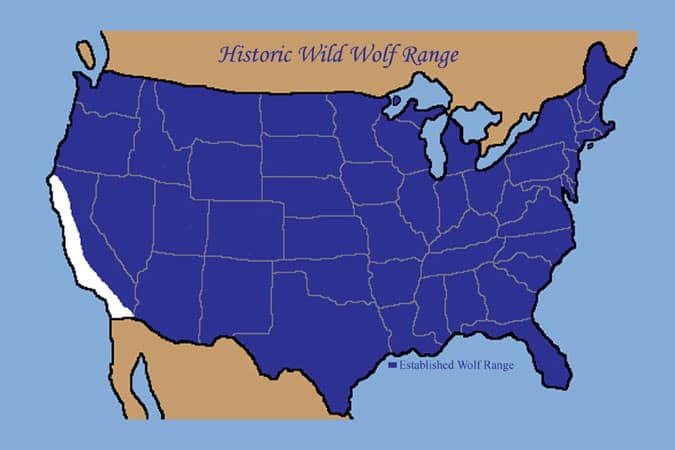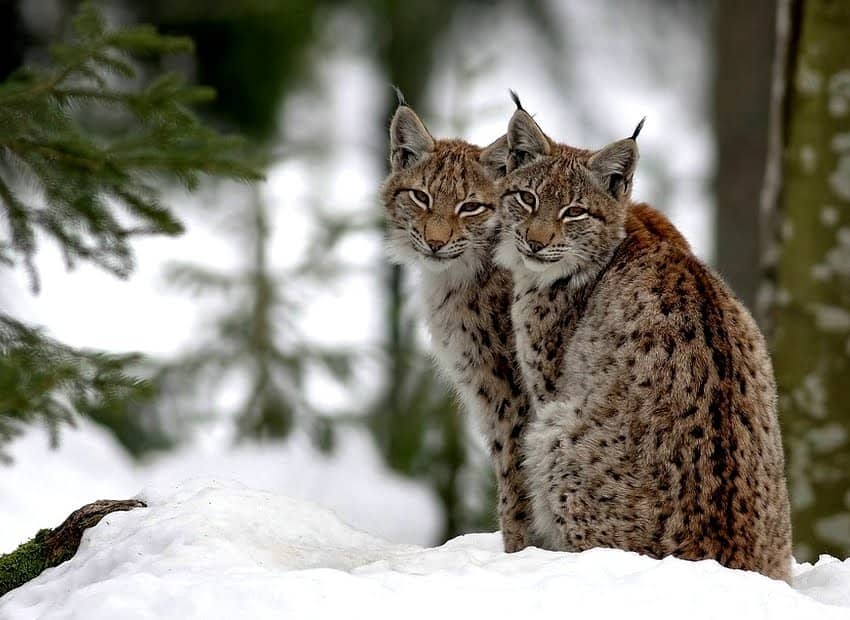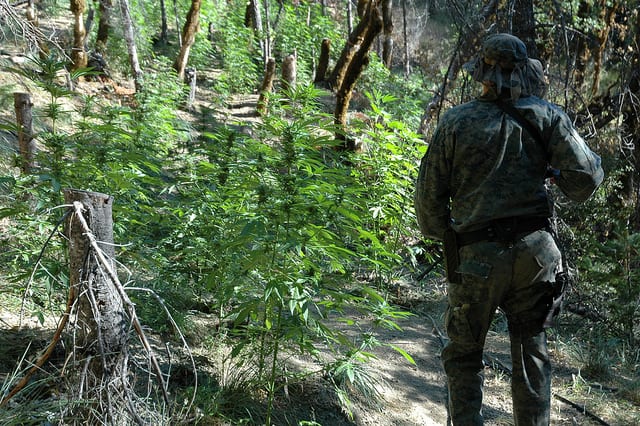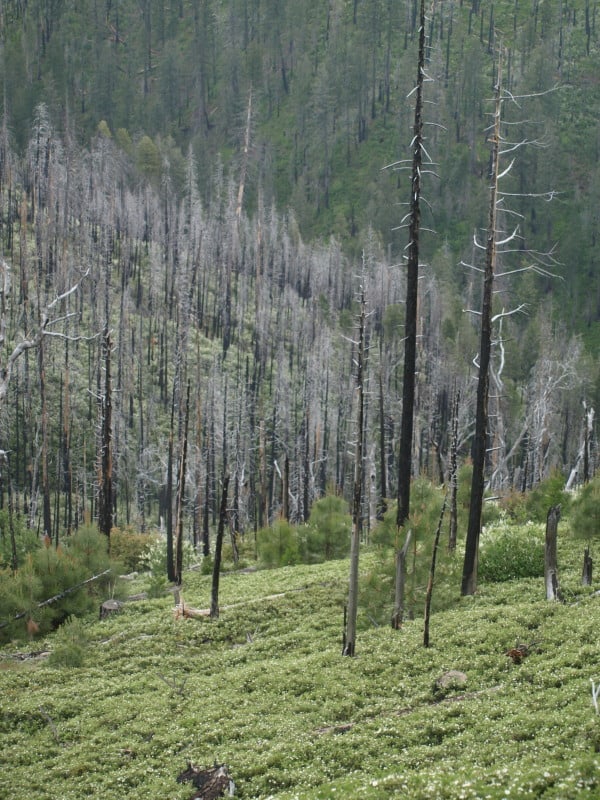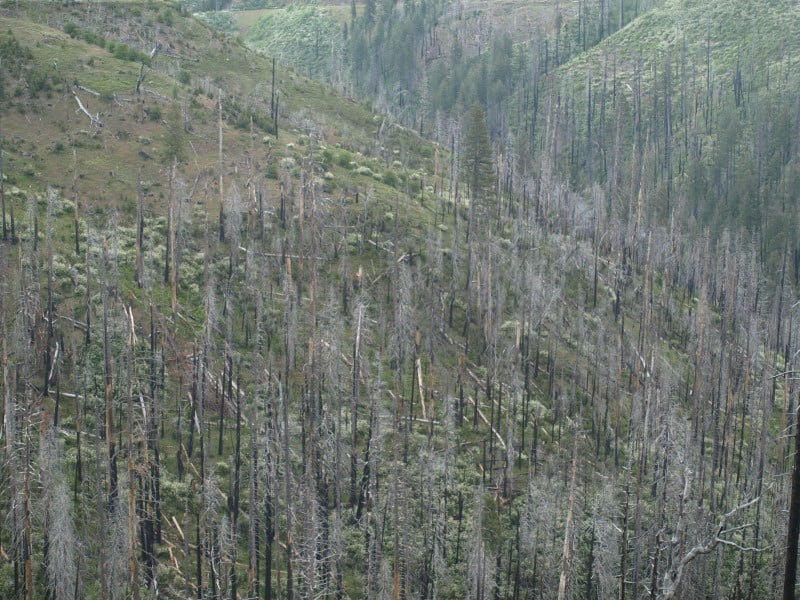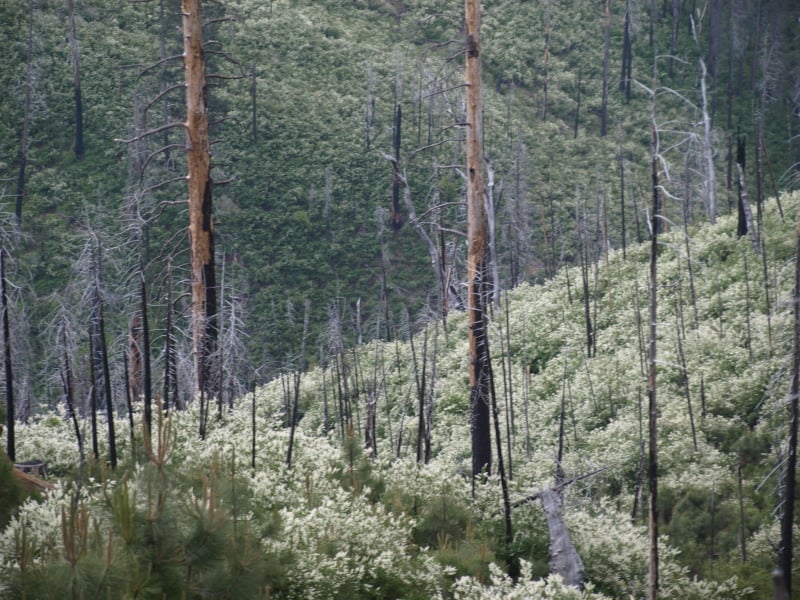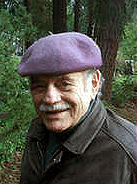
Happy Birthday to Michael Frome, a friend and Wilderness hero who turns 93 years young today. My wife was lucky enough to have Dr. Frome as a professor at Western Washington University during the 1990s and I’ve been fortunate to visit with him in Montana over the years. We’re planning to rendezvous with Michael later this summer in Wisconsin, as he currently lives an hour south of my hometown of Elkhart Lake.
Dr. Frome’s 1974 book, Battle for the Wilderness, should be required reading for anyone involved in public lands Wilderness issues, especially in today’s day and age of quid pro quo Wilderness proposals. Suffice to say, if Howard Zahniser, Steward Brandborg and those advocating for the Wilderness Act in the late 1950s and early 1960s would have taken some of the approaches to Wilderness protection we see emerging today, America’s Wilderness system (the envy of the world) would be a much different place. Although I suppose you would have been able to ride a tram to the top of many Wilderness peaks and enjoy a hot espresso and fresh muffin.
Michael remains active in many Wilderness, public lands and conservation issues. When he was 90, National Parks Traveler magazine did a feature on Frome, titled, “90 Years On, Dr. Michael Frome Continues to Lament the Sate of the National Parks.”
So, in celebration of Dr. Frome’s 93rd trip around the sun, and in honor of his continuing life’s works to protect Wilderness and America’s public lands, below is a copy of a speech Dr. Frome gave on April 26, 1984 at the University of California-Berkeley titled, “20th Anniversary of the Wilderness Act: Still in Pursuit of the Promised Land.” Below Michael’s speech is a copy of the introduction that was made for Michael. I’m not sure who gave the intro, but it includes a great deal of biographical information about Dr. Frome.
Since next year is the 50th Anniversary of the Wilderness Act, it seems relevant to go back and remember what Wilderness activists thought during the 20th Anniversary. Happy Birthday Michael Frome, and here’s to many more!
Michael Frome: 20th Anniversary of the Wilderness Act: Still in Pursuit of the Promised Land (link)
Given at the University of California-Berkeley on April 26, 1984
I feel highly honored at being here at the University of California, invited to deliver the 1984 Horace M. Albright Lecture on Conservation. I am blessed at the opportunity to express my ideas freely and fully before this audience in this setting, under the banner, as it were, of a man I have known and admired for years, and am privileged to call my friend, Horace Albright, one of the principal figures in the history of conservation.
Freedom of expression is paramount in my life. I say that as a journalist, but I believe that free expression is the keystone of the health and efficiency of any institution or government or society. Diversity of opinion, even dissent, challenges an institution, or a political, social and economic system, to continually review and renew itself.
As a journalist, I believe that truth-telling is essential to my profession. Truth-telling must and will prevail. “Knowledge will forever govern ignorance,” wrote James Madison, “and a people who mean to be their own governors must arm themselves with the powers that knowledge gives.” What greater goal could a journalist set for himself? What finer reputation could be earn than as one who arms the people with the power that knowledge gives?
The same is true of anyone, for that matter, anyone with knowledge and position from which to communicate it. At times, to be sure, an open expression of ideas may seem foolhardy or risky. It endangers professional acceptance and advancement. But freedom of the individual, with the right of self-expression, is sacred. I consider my freedom as a need, like water or food, to sustain the spirit as well as the body; for real success or failure comes only from within and society cannot impress it from without. To quote Joseph Wood Krutch: “Only the individualist succeeds, for only self-realization is success.”
Or as a reader of Field & Stream wrote to me: “History books are records of events and the doings of individuals who didn’t go with the flow.” Let truth hang out and consequences follow. The challenge is to make the most of the democratic American system. It may not be so good, as they say, except when compared with the alternatives. From my own life I know that it works. That I should have uncensored outlets open to my writing, that I should have a place to lecture at the University of Idaho (as I did earlier at the University of Vermont), and that I should be here tonight – such experiences give me faith in myself and the American system.
The only trouble with democracy is that we take it for granted. Democracy is what we make of it, a system under which we the people get what we deserve. Laws and regulations have their place, but only people make things work. That is why I feel that writers, and educators, too, should be leaders in the exercise of free expression. We are the human machinery that stimulates and sustains the democratic system.
Wilderness I see as the embodiment of freedom, which is why I’ve chosen to celebrate the twentieth anniversary of the Wilderness Act with you here tonight. That law is an extension of the charter handed down by the founding fathers with its guarantee of life, liberty and pursuit of happiness. Wilderness I equate with freedom from want, war, and racial prejudice, and the freedom to cultivate one’s thoughts in one’s own way.
Last summer while in northern Minnesota, I got to thinking about Arthur Carhart, one of the wilderness pioneers. During the period he worked for the Forest Service as a landscape architect, from 1919 to 1923, he was dispatched to the Superior National Forest, in Minnesota, with directions to prepare a plan for recreation development. Carhart, however, recognized that the area could be “as priceless as Yellowstone, Yosemite, or the Grand Canyon-if it remained a water-trail wilderness. ” His bosses thought that was wild talk; they were considering a master plan to build roads to reach every lake and to line the shores with thousands of summer homes. But Carhart persisted to advocate his own concept, won support and laid the basis for establishment of what we now call the Boundary Waters Canoe Area.
Shortly before Carhart left, Sigurd Olson arrived on the scene. Over the years Olson would stand in meeting halls urging that natural values be protected from assorted mining, dam-building, logging and motorboating. It wasn’t easy and sometimes he was treated to hoots of scorn and derision. Years later Carhart paid tribute to Olson for leading a small group, which held, as he said, “a thin line of defense protecting this exquisite wilderness until help could rally to save it.”
What was it they found worth defending? Based on my experience, I would call it the feel of freedom above all else. Freedom from crowds, cars and mechanical noises. Freedom that comes from doing for one’s self, without dependence on technological support. Freedom in nature, derived from being among creatures that get up and fly when they want to, or run, swim, wiggle, dive and crawl, all admirable modes of self-propulsion. In the northern Minnesota wilderness I felt free to pick and savor wild blueberries, free to swim in cool waters, cool and dark, almost as pure as in the days of the Chippewa Indians.
I went to Minnesota as part of an exploration of wild America, pursuing adventures and encounters with different kinds of people and asking what wilderness means to them. They made some beautiful statements, usually simple yet lofty and profound. One of my friends, a forester in Idaho, said:
“You get away from your tradition and lifestyle in a wilderness and you find out in a heluva hurry who you are and what you’re capable of, what are the real issues in life. What really frightens you will come to the surface.
“Wilderness is my lifestyle. Wilderness is necessary. It represents that part of America that once was and always will remain. Wilderness is forever. We should be lucky enough to be smart enough to set it aside. We don’t have to be like the Europeans. We don’t have to wish for that type of land representation. We’ll have it. I think we’re smart in doing it.”
The very idea of wilderness enriches my body, mind and spirit, but is also elevates me to look beyond my own wants and needs. The American tradition has sought the transformation of resources; the Wilderness Act, however, stimulates a fundamental and older tradition of relationship with resources themselves. A river is accorded its right to exist because it is a river, rather than for any utilitarian service. Through appreciation of wilderness, I perceive the true role of the river, as a living symbol of all the life it sustains and nourishes, and my responsibility to it.
The Wilderness Act of 1964 opened an era of new legislation to protect rivers, trails, endangered species of plants and animals, air, water and the environment. My travels and studies convince me that wilderness itself merits the right to be wild. Wilderness is meant for the bald eagle, condor, spotted owl, and ivory-billed woodpecker; for birds that nest in the tops of old trees or in the rotted holes in tree trunks and that need dead or dying logs to house the grubs and other insects on which they feed. Wilderness is for grizzly bears, mountain lions, bighorn sheep, elk and wolves that need large areas set aside from civilization.
We are fortunate, in America, as my forester friend said, that we have such places at this advanced stage of history. As to why our generation benefits from this legacy, I identify two principle influences.
The first of these is the influence of leadership, sometimes idealistic, sometimes practical, conceiving wilderness as a valuable entity, or resource, defining its place and purpose in national destiny, demonstrating the means of protection and perpetuation. This leadership is as old as the republic, manifest in earlier days through the works of James Fenimore Cooper, George Catlin, George Perkins Marsh, and in pre-World War 11 years of Arthur Carhart, Aldo Leopold and Bob Marshall. The last three were Forest Service employees, which shows that government officials can be wilderness leaders, too-though few, if any at all, have made much of a mark in the last 30 or 40 years.
The identification of Horace Albright with this notable lecture series leads me to discuss the early role of his agency, the National Park Service, and its approach to wilderness. From 1872, when Yellowstone National Park was established (even before there was a National Park Service), the Department of the Interior administered wilderness as a deliberate mission, even to calling troops of cavalry to protect it when Congress failed to allocate funds through non-military channels. Early directors of the Park Service were strong wilderness advocates and activists. I love the story of how Stephen T. Mather, the first director, issued an order to a lumber company to dismantle its mill and depart the bounds of Glacier National Park. When the order was disregarded, Mather personally headed a brigade that exploded the mill with 13 charges of TNT. On another occasion, when it was suggested to him that park superintendents be appointed under the same political terms as postmasters, Mather replied that he was going to pick his own people according to capability alone.
Those early years of the National Park Service were its heyday, when Mather and Albright built a vigorous, capable, aggressive organization, devoted to public service and committed to wilderness. It not only safeguarded wilderness values where they existed, but often restored these values, despite powerful opposition, in areas like Big Bend, Sequoia, Yosemite, Glacier, and the Great Smoky Mountains, all of which had been degraded by logging, grazing, mining or settlement.
When I was writing my book about the Great Smokies, “Strangers in High Places,” Horace was a major source of historic information. He told me, among other things, about his confrontation with Senator Kenneth D. McKellar. McKeller was a rough, tough, crusty machine politician, who built his strength in Tennessee by “bringing home the bacon” from Washington and by demanding every bit of his share in control of patronage (which earned him the title of “grand-pappy of all political pie-hunters”). He built his strength in the Senate through the system of seniority, which recognizes and rewards the talent of surviving through one election after another.
In the early 1930s, when McKellar learned there was to be a scenic road built on the crest of the Blue Ridge Mountains of the new Shenandoah National Park in Virginia, he demanded one just like it for the Great Smokies. Here is what happened (to quote from “Strangers in High Places”):
“The national parks director went to see him and endeavored to explain that because of the rugged topography there could never be a road along the eastern crest of Smoky, and moreover that there never should be – that a large portion of the Great Smokies should be preserved as a roadless wilderness. The two national parks were designed to complement each other, Albright emphasized; it would be ridiculous to develop them exactly alike.
“McKellar exploded. He couldn’t bother with such details as the meaning of a national park and the methods of its management. He blasted Albright and for good measure blasted Albright’s parentage. That a damn career bureaucrat would dare stand in the way of the welfare of Tennessee! McKellar would have liked to punch the rascal (who had to be a Republican anyway, since he was serving under Hoover) squarely in the nose, and he said so.
“Albright withdrew. He was a tough man in his own right, but knew when to advance and when to retreat. In a few days he returned to Capitol Hill. McKellar refused to see him, but Albright had brought along an intermediary, a mutual friend, who insisted that he listen to the parks director and held him strongly by the arm while he did. ‘I will explain to you the difference between the two parks, of Virginia and North Carolina-Tennessee,’ began Albright. After so doing, he concluded, ‘I will not, under any circumstance, go ahead with the road you demand. Furthermore, Senator McKellar, I resent your personal insults.’
“Despite McKellar’s power and influence, that road was not built. The politicians were obliged to accept the National Park Service as a bureau that ran its affairs on non-partisan integrity. They may not have liked it, but they respected the Service all the more because it lay beyond the spoils system.”
Alas and alack, they don’t much make them like Mather and Albright anymore. Nor like Giffort Pinchot or Ferdinand Silcox either. But they do make them like John Muir; maybe not quite like the singular Muir, but in his image. This leads me to the second significant influence in the protection of wilderness.
One lesson I learned from Horace years ago is that the act of setting up national parks is not enough to make them work. By the same token, having 80 million acres designated in the National Wilderness Preservation System doesn’t insure their sanctity. National parks, national forests, national wildlife refuges, state parks and forests, county and city parks – no tract of public land has its future assured simply with a label, nor because it has a staff of paid professionals in charge. As I said earlier, laws and regulations have their place, but only people make things work. What is most needed, as Horace expressed it years ago, is “wider support from more citizens who will take the trouble to inform themselves of new needs and weak spots in our conservation program.”
The fact is that each national park, starting with Yellowstone, came into being through public will and desire. Someone had a dream, plus the determination to rally others to make that dream come true. Such is the story of the Redwoods, Santa Monica Mountains, North Cascades, Rocky Mountain, Glacier, Great Smoky Mountains, all of them. The same principle applies to the ongoing protection of preserves once they are established, that is, through the identification of those “new needs and weak spots.”
An individual may be struck with a brilliant idea in land use, but that idea reaches fulfillment because the people want it to. For example, the Appalachian Trail was conceived in 1921 by Benton MacKaye, a trained forester and regional planner. It was based on his wanderings in the New England forests, although others had already begun localized trails. In an article titled “An Appalachian Trail – A Project in Regional Planning,” he envisioned “a ‘long trail’ over the full length of the Appalachian skyline from the highest peak in the North to the highest peak in the South.” Few proposals in regional planning have ever fired the imagination as did MacKaye’s. Scattered groups and individuals began to work, ultimately to work together to forge the Appalachian Trail into the longest marked path in the world. It has been supported ever since as something more than merely a recreational footway. “This is to be a connected trail,” as the Appalachian Trail Conference declared in its constitution as early as 1925, “running as far as practicable over the summits of the mountains and through the wildlands of the Atlantic seaboard and adjoining states, from Maine to Georgia, to be supplemented by a system of primitive camps at proper intervals, so as to render accessible for tramping, camping, and other forms of primitive travel and living, the said mountains and wildlands, as a means for conserving and developing, within this region, the primeval environment as a natural resource.”
The establishment of the Idaho Primitive Area is another case in point. I recently came across historic data, including the minutes of a meeting conducted at Boise in December 1930. The governor of Idaho, H. Clarence Baldridge, had appointed a committee to consider the wisdom of setting aside something to be called “primitive area” in the heart of the national forests of the state. The governor at that 1930 meeting said it was the wildest country he had ever seen and that the general consensus was it should be “perpetuated as nearly in its natural state as possible for future generations.” Following considerable study and consultation, the Forest Service set aside approximately one million acres.
The Idaho Primitive Area came into existence because the people of the region wanted it to. That was in 1931, more than half a century ago. It was established on paper but endures down to our time in fact. It is sometimes argued that wilderness is the playground of elite and effete urbanites, but I don’t believe it. The Idaho Primitive Area would have been lost a long time ago if the people of the state had not felt their stake in it as some priceless possession. Little wonder that, when then Senator Frank Church conducted hearings on the proposed permanence and enlargement of the Idaho Primitive Area, people who had never spoken publicly before stood and opened their hearts in praise of an area larger and wilder than Yellowstone. Little wonder that, in seeking for some appropriate way of paying tribute to Senator Church before his death, Idaho should unite in 1984 behind the new name of the Frank Church-River of No Return Wilderness, the largest wilderness outside of Alaska.
One further illustration. Twenty years ago, I attended a symposium conducted at the South Rim of the Grand Canyon on the question of whether the Colorado River flowing far below us should be dammed. David Brower, the executive director of the Sierra Club, argued fervently that it should not be. My friend Martin Litton was present there, too, and was very active in opposing the plans of the Bureau of Reclamation, but Brower has been most identified with leadership in that issue. I recall how he charged at that symposium that the Sierra Club book on the Grand Canyon was being suppressed and was not available for sale in the national park.
As it happened, the park superintendent of that time was a friend of mine. I was with him only an hour after Brower had made his remark. The superintendent’s feathers were ruffled. “Why, of course we have the book for sale. It’s right here. ” And there it was, hidden under the counter. The Secretary of the Interior, Stewart L. Udall, was one of the conservation heroes of the period, but nowhere near infallible. He was a principal advocate of the proposed dams on the Colorado River and of environmentally destructive power development in the Southwest. As a consequence, national park people were silent and silenced.
In 1970 four seasonal employees resigned their positions at Mesa Verde National Park after being warned not to discuss with visitors effects of the nearby massive Black Mesa stripmining project on the Hopi Indians. “Morally,” they declared, “we felt we could no longer work for an agency whose purpose is to protect our cultural heritage, but whose practice is censorship of major environmental problems which ultimately affect the very park in which we were working.”
Those four employees should have been praised, rather than forced to resign. Professional training tends to teach one to conform and direct ambitions into safe channels, whereas freedom of expression needs to be recognized, stimulated and defended as an essential element of good government. But where government leadership fails, in the absence of a Mather or Albright, then the public voice must be heard. With due credit to the instrumental role of David Brower, it wasn’t quite he who saved the Grand Canyon, but people all across this country who expressed themselves, echoing the plea of President Theodore Roosevelt early in this century: “Do nothing to mar its grandeur.”
So it is with wilderness, the natural treasure that enriches our lives and our land. The Wilderness Act of 1964 could never have been passed without broad public support and approval. Thus we celebrate this 20th anniversary of a momentous and proud happening, one of the noble achievements of modern civilization, a show of ethics and idealism to contrast with super-technology, super-colonialism and violence. The National Wilderness Preservation System provides hope for a coming age of reason and nonviolence, in which respect for the earth and of all its occupants will prevail.
But we have a long road to travel to realize the promise of the promised land. And I don’t lay the blame on commerical interests which may or may not view wilderness as a source of raw materials. The four federal agencies responsible for administering the Wilderness System have not met their responsibility or opportunity. They don’t think or plan in ecosystems. They don’t direct serious attention to wilderness administration. They don’t coordinate their approaches. In my travels across the country I haven’t seen a single wilderness managed as it should be in fulfillment of the letter and spirit of the Wilderness Act, but I have seen wilderness areas in terrible condition, abused and degraded.
Little attention is directed to wilderness theory and principle. I’ve met more than a few personnel at all levels in these agencies who have never taken the time to read the Wilderness Act and consider it to be all a bother anyway. “Well,” they demand to know, “how much wilderness do you actually need?” While recognizing that it can’t all be wild, I feel reluctant to answer that question; what counts more is whether each succeeding generation must settle for an increasingly degraded world, reflected in de0 graded, circumscribed living. I can’t juxtapose resource commodities against wilderness when the great value of wild country lies in its freedom, challenge and inspiration.
We need to safeguard the sources of freedom, challenge and inspiration. The Constitution is recognized as a sacred document guaranteeing freedom of expression, though it requires continual testing and defending. Wilderness is equally sacred, in my view – a living document of land and people, as valid and vital as the Constitution.
I’ve learned that we, even the experts – or especially the experts – understand very little about wilderness reserves: of how to manage and interpret wilderness so it will always be wild; of its abundant benefits to society; of how to apply the lessons of wilderness to make the whole earth a better place to live. We need to assess actual and potential values of wilderness reserves in terms of their bearing on human sensitivity and creativity.
I respect resource management and the education of resource professionals, but I want that professionalism firmly and broadly grounded, in philosophy and ethics as well as science. That’s what makes being part of a natural resource learning institution exciting to me. Last year, under the auspices of the Wilderness Research Center of the University of Idaho, my colleagues and I conducted the First National Wilderness Management Workshop. The Chief of the Forest Service, Max Peterson, one of the principal participants, felt moved to call it a “landmark conference,” and the immediate result was to raise the visibility of wilderness in resource management on federal lands. More people now know there are problems that must be addressed. Other such projects are planned at the University of Idaho, along with ongoing courses in wilderness conservation and management.
Last month I was privileged to speak at Colorado State University on the “Twentieth Anniversary of the Wilderness Act: Heroes Who Made It Happen – New Heroes in the Making.” A few years ago that presentation would have been unlikely; forestry schools didn’t care much for the subject. Now Colorado State is preparing for a major national conference on wilderness research and, even more significant, to serve as host for a world wilderness congress in 1987.
These activities by educational institutions are timely. The 20th anniversary of the Wilderness Act finds us on an upward curve of environmental concern, with wilderness at the heart of our environment, as at the heart of the nation.
I think of the campaigners for the Wilderness Act as true patriots: Howard Zahniser, David Brower, William O. Douglas, Richard Neuberger, Olaus Murie, Stewart Brandborg, Hubert Humphrey, John P. Saylor, Sigurd Olson, and others who should not be forgotten. My research shows Horace Albright as one of the early proponents of a Wilderness Act. At the Mid-Century Conference on Resources for the Future, held in Washington, in December 1953, he declared as follows:
“The wilderness areas in the national forests have never had a basis in law. They have been set aside by the Secretary of Agriculture for a good many years, and I am not sure that even now he can go to Congress and get such a law. Right away it would be asked: Would that mean the stopping of grazing, or of mining, or of cutting? But, just the same, law is the only means by which the areas can eventually be protected. The wilderness areas, or some of them and some of their characteristics, ought to be embodied in the law.”
My favorite heroes are my own breed, writers who are activists, like Sig Olson, Dick Neuberger, Wallace Stegner, Paul Brooks, Bernard DeVoto, and especially journalists who tell it like it is, like John Oakes. In the New York Times of May 13, 1956, he reported that Senator Humphrey was sponsoring a bill that would set up a national wilderness preservation system. “The idea is certainly worth exploring,” John wrote, “if what is left of our country in a natural state is worth saving, as many of us believe it is.” He outlined the problem as follows:
“This isn’t just a question of city folks seeking outdoor recreation, or enjoying spectacular scenery, or breathing unpoisoned air. It goes much deeper; it springs from the inextricable relationship of man with nature, a relationship that even the most insensitive and complex civilization can never dissipate. Man needs nature; he may within limits control it, but to destroy it is to begin the destruction of man himself. We cannot live on a sterile planet, nor would we want to.”
Of course we can’t. The 20th anniversary of the Wilderness Act gives assurance that we will not have to. We have still to achieve the promised land, but the pursuit itself is uplifting and yields its own
Introducing: Michael Frome
Mr. Frome was born in New York City and spent most of his early years there and in Washington, D.C. He studied at City College of New York and George Washington University, without obtaining a degree, being eager, or over-eager, as he admits, to begin a career in journalism. His debut was inauspicious, a start from the bottom at the Washington Post and International News Service. He joined the Army Air Corps during World War II and was trained as a navigator in the Air Transport Command, which led to flights to distant corners of the globe. For the last year of the war he was stationed at Hamilton Field at San Rafael, and made his first visit to Berkeley, to see a football game.
Following the war he returned to the Washington Post as a full-fledged reporter, writing front-page stories. But travel had made him restless. He went south for a time to write for the Nashville Tennesseean, then returned to Washington to do public relations for the American Automobile Association. During this period he developed and cultivated his interest in tourism, the out-of-doors, and conservation. He met Horace Albright, who was then Chairman of the National Parks Advisory Board, and such other members of the Board as Alfred Knopf, the literary lion, and Bernard DeVoto, the author.
In 1959 he became a freelance writer, first focused on travel, then shifting his attention to conservation, natural resources, forestry, wildlife, and political issues relating to the environment. Over the years he has contributed to major magazines and newspapers. He has been a conservation columnist for American Forests, Field and Stream, and the Los Angeles Times. Currently his columns appear in Defenders of Wildlife and Western Outdoors, but you never can tell when you will pick up a publication with a Michael Frome byline or some quotation of his work.
He has been a prolific writer. His books include The Forest Service, revised and updated in 1984; Battle of the Wilderness and Whose Woods These Are, both reprinted this year; Strangers in High Places; the Rand-McNally National Park Guide; and The National Parks. He has lately completed Promised Land – Adventures and Encounters in Wild America, which will appear early next year.
Michael has received a number of awards. He particularly prizes the Mort Weisinger Award presented in 1981 by his peers of the American Society of journalists and Authors for the best magazine article published in the preceding year, a five-part series titled “The Ungreening of the National Parks.”
No stranger to the academic community, Michael has lectured at many colleges and universities. In 1978 he served as Visiting Professor of Environmental Studies at the University of Vermont. In 1981-82 he was Author-in-Residence at the Pinchot Institute for Conservation Studies, headquartered at the Gifford Pinchot Estate at Mitford, Pennsylvania. For the past two years he has been Visiting Associate Professor of Wildland Recreation Management in the College of Forestry at the University of Idaho, where he will continue for another year at least. Idaho is fortunate to have him.
Michael Frome is a spokesman for wilderness, for wildlife, for public lands, for wise land use. He is an independent voice and a critic constructive in the public interest. Walter J. Hickel, while Secretary of the Interior, declared “Mike tells it like it is, not like we’d like to think it is.” Senator James McClure of Idaho greeted our speaker at a wilderness hearing as follows: “Now, you’ve criticized me, but you’ve been fair and done it with a flair. You’ve pinned my hide to the wall, but it’s up there with some pretty good hides. I’m glad you’re here in Idaho.”
